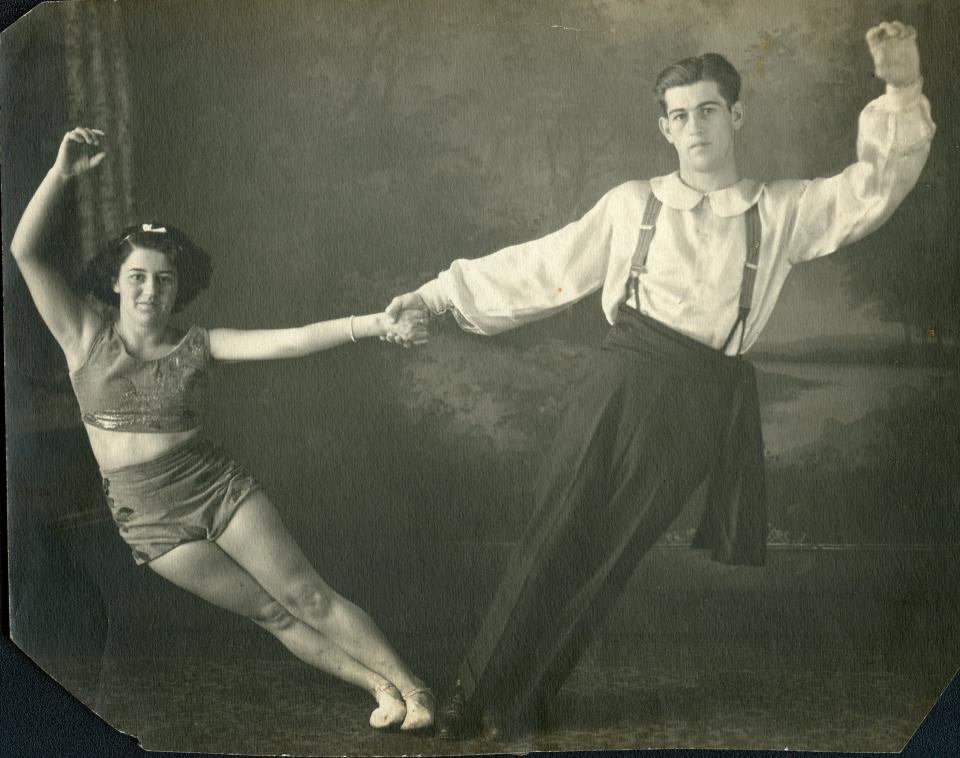Historically Speaking: Dancing through the ages in Exeter
As August draws to a close and school is set to begin, it is once again time to start signing the kids up for afterschool activities. For a lot of families, this means dance class. Decisions need to be made – when are classes, how much will it cost, are there discounts for siblings, is it a competitive or recital school, what is the dress code, will these dance shoes still fit in the spring? Those who’ve done it, know.

Dancing classes have been popular in Exeter for hundreds of years. William Wyman offered classes to the “young Ladies and Gentlemen of Exeter” in 1836. The dancing he taught, and the type that would be taught in town for decades, was partnered dancing for public balls. These events allowed people to meet up with minimal physical contact. He offered “the latest and most fashionable dances; consisting of Cotilions, Quadrilles, Waltzes, Fancy Dances, and Contra Dances.” Sometimes dancing was taught to younger children, but it was really considered an adult activity. This was a shame, because youngsters have near-infinite energy and enthusiasm and will happily dance to the music in their own heads. No one paid much attention to children back then.
Historically Speaking: The arrival of the atomic age
The early 20th century brought formal dance training to children. The Misses Fannie and Valerie Faulhaber were well-trained dance teachers who advertised in 1901, “classical dancing, which is now so much the vogue among society women, and which has its raison d’etre in its development of a fine carriage and of the poise and elasticity that suggest perfect health and self-possession.”
Dancing, it seems, was about more than just finding a marriage partner.
The real burst in enthusiasm for children’s dance can be laid at the tap shoes of Shirley Temple. Enrolled at the age of 3 in Meglin’s Dance School in Los Angeles, Shirley danced her way into the movies and enthralled viewers signed their own children up for dance class. Reviews and recitals became public entertainment. In 1934, Aubrey Shannon, who was just 19 years old, held a musical review on the Ioka stage featuring a “talented group of young performers ranging in age from five to twenty.”
Shannon, a native of Epping, had become one of the most sought-after dance teachers in Exeter. The Exeter News-Letter reminded readers, “In February 1926, while a pupil of Miss Grace Chesley, Miss Shannon received an award of merit in a child dancing contest for excellence in dancing.”
Historically Speaking: The battle for liquor in Exeter
Something of a child prodigy, Aubrey often danced with her reluctant brother, Bobby, as her partner. He wanted to be a boxer. The lack of male dancers has been a problem since these early days of dance classes. It’s not that boys don’t like dancing – a group of young Tiger Cubs visited the Exeter Historical Society a few years back and when the antique Victrola was cranked up, they began dancing with such abandon it skipped the record. Boys just don’t seem to like having anyone think they like dancing. Aubrey Shannon taught dance in town until around 1937. She went on to dance professionally with the RKO Circuit.
Dance classes evolved from partner dancing, although Lena Lannon still advertised ballroom dancing in 1950, she primarily offered ballet, tap and toe. Lannon ran her dance school out of her own home for decades. Finding a place to set up a studio could be quite a challenge. Aubrey Shannon’s studio was on the second floor of the old fire station. Bonnie Kucharski held classes at the Polish Hall on Charter Street. Teachers advertised classes in late August or early September, often listing their teaching credentials. Loretta LaHaye, who held her classes in the Seward Hall, was a graduate of the Boston Normal School for Dancing Teachers.
Historically Speaking: The bubbly world of the soda fountain
In the spring, these schools elbowed one another to secure the Exeter Town Hall for their annual recitals. Line after line of students stepped onto the stage to perform for their tired, yet starstruck parents. For all the fees, interrupted dinners, driving and, yes, nagging, it still turned to magic at the hot, lengthy recital. Somehow, the kid who’d decided to cut her own hair and couldn’t seem to walk a straight line would be transformed into part of a sequined sparkly line of woodland fairies wearing candy-colored spray-painted dance shoes that (hopefully) still fit.
Today a lot of dance schools are involved in dance competitions. The rivalry between teachers and schools can make dance seem more like a sport. In many ways, it is a sport – there is athleticism, discipline, and endless practice. But even if the child doesn’t win any trophies or isn’t a soloist at the recital, at least for a fleeting time she’s been part of the beauty that comes when music and movement combine.
Barbara Rimkunas is the curator of the Exeter Historical Society. Her husband, Mike, can still competently twist the hair of a squirmy child into a near-perfect dance bun. Support the Exeter Historical Society by becoming a member. Join online at www.exeterhistory.org.
This article originally appeared on Portsmouth Herald: Historically Speaking: Dancing through the ages in Exeter

